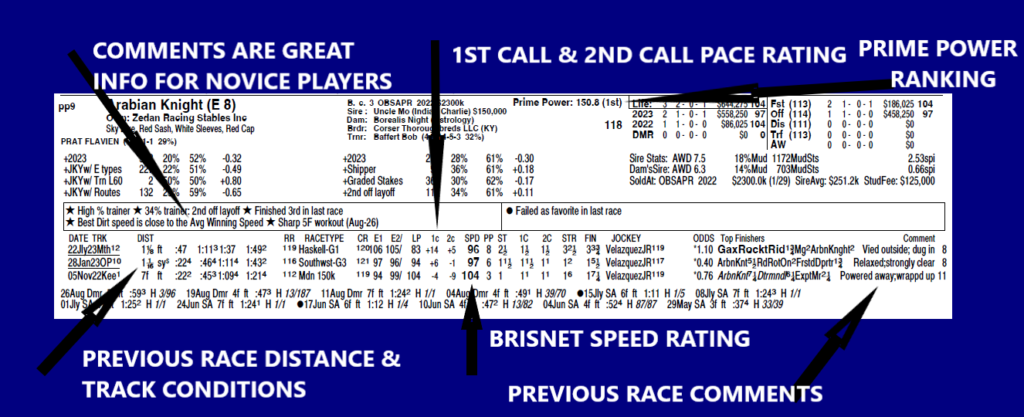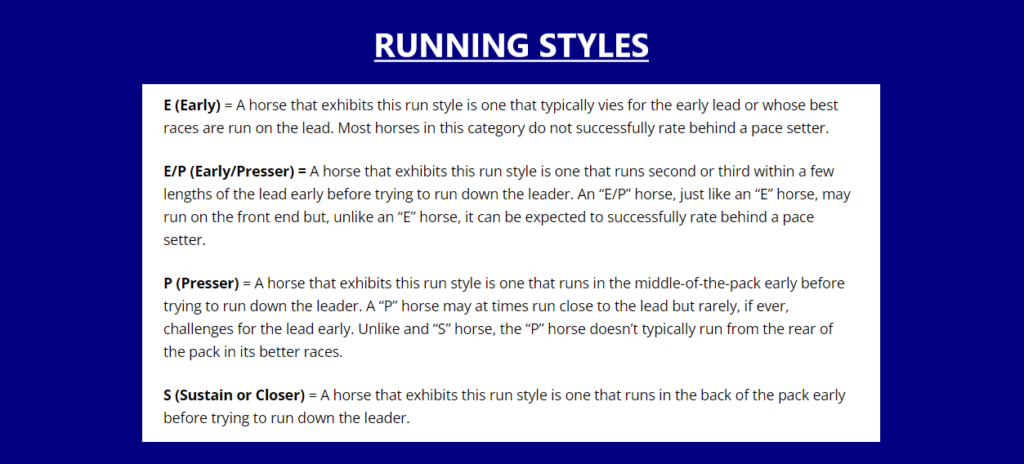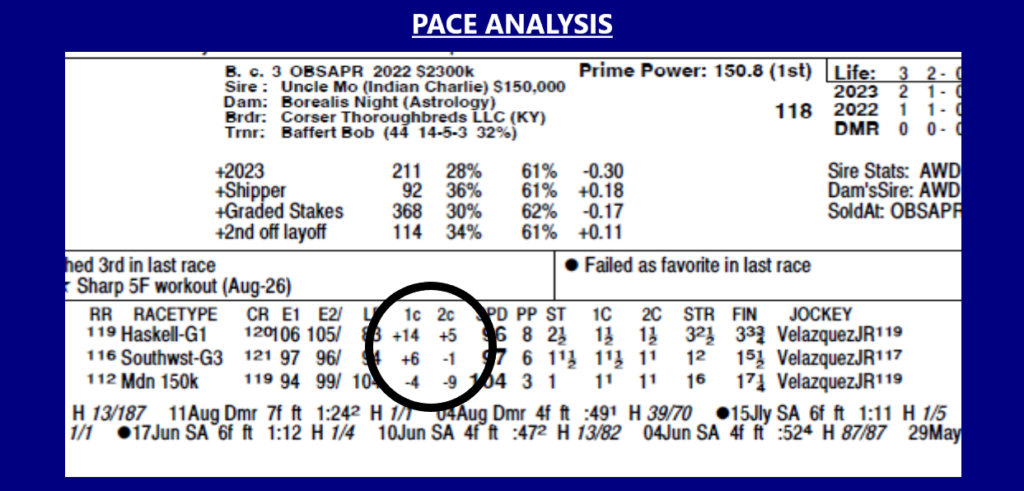by BillyHoSports September 6, 2023
Unlocking the secrets of past performances in horse racing is your gateway to making informed bets and mastering the art of handicapping. I guarantee you that most people often overlook vital information and betting angles because they don’t know what they’re looking at. While most past performances (PPs) may appear very similar, there are some important differences to be aware of. When it comes to Brisnet, for instance, the speed figures are typically higher than those found in the Daily Racing Form, which employs the Beyer speed rating.
While I may not be an expert in providing detailed explanations for all those numbers you see in past performances, I invite you to simply click on the links above; they will serve as valuable resources to further your understanding of this intricate subject.
Brisnet PPs

One of the most common stats used in horse racing are speed figures. These figures encapsulate a horse’s speed and ability, allowing bettors to compare horses’ past performances and make informed decisions when wagering. It’s basically a points scale to give you a better idea of the more talented horses in a race. You can get a more detailed explanation here.

Horses can exhibit various running styles, which broadly fall into categories such as front-runners, stalkers, closers, and more. The running style not only reveals how a horse prefers to run but also hints at its potential race tactics. Front-runners like to take the lead early and maintain it, while closers tend to conserve energy and make a late, powerful surge. Stalkers, on the other hand, often settle in behind the leaders before launching their move.
If a race is crowded with front-runners, it might lead to a fast pace and benefit closers. Conversely, a lack of early speed could favor front-runners. In essence, understanding a horse’s running style allows one to predict how it will navigate the race course, providing a crucial edge in the art of handicapping and wagering.

Pace Makes the Race
The way I understand it, they analyze two pace splits from each race (marked as ‘1c’ and ‘2c’) and define whether the pace was fast, average, or slow for the distance and resulting final time. Consequently, if the leader was running faster than average, the numbers are positive; conversely, if the leader was running slower than average, the numbers are negative. The pace would need to be +15 & faster on the 1c for me to consider the fast pace a factor. On the other hand, a -5 or lower is enough for me to consider the pace slow. Using this figure can help you figure a horses chance to compete in the upcoming race.
In conclusion, the analysis of pace splits in horse racing, is an essential aspect of handicapping. It provides a clear understanding of the race dynamics and how the leader’s performance aligns with the race’s average pace for a given distance. This information is invaluable for bettors and racing enthusiasts seeking to make informed decisions.
Subscribe to BillyHoSports


